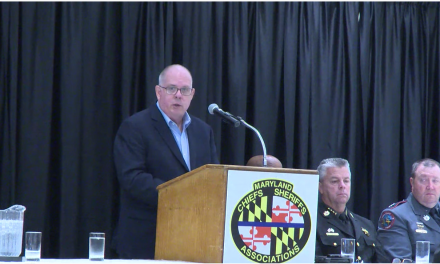WASHINGTON – Despite decades of conservation efforts, the Chesapeake Bay Foundation gave the overall health of the Chesapeake Bay a D+ in its recently released 2022 State of the Bay report.
In fact, the needle has hardly moved since the Chesapeake Bay Foundation began issuing the annual report in 1998. The original report gave the bay a score of 27 out of 100. Today that score has only improved to 32 out of 100.
CBF’s Interim Maryland Executive Director Erik Fisher told Capital News Service: “We’re a long way from where we need to be, and it’s clear that we have to pick up the pace to get back on track. We are behind. I don’t think anyone’s happy with where we are.”
The bay faces a long road ahead: the goal is to raise the score to at least 70 out of 100, which is a long way from the current 32.
“I think we recognize that in our lifetimes, we’ll never be back to the bay of pre-European settlement,” Fisher said. “But we can have a stable, thriving ecosystem where we can feed ourselves, where we can swim, and fish and meet those standards that we’re all aiming for.”
One issue hindering conservation progress is a dramatic decline in water-related pollution enforcement. Between 2016-2021, Maryland took 67% fewer water-related enforcement actions, according to the 2022 Chesapeake Accountability Project report.
The Maryland Department of the Environment (MDE) is significantly understaffed as well. The agency has lost one out of every seven staff members since 2002 and the budget has fallen by more than one-third. In spite of the threats posed by climate change, MDE’s budget only represents one-fifth of one percent of Maryland’s general fund state budget.
Even with more resources, the changing environment presents significant hurdles for conservation efforts. Fisher said that “climate change has moved the goalposts.”
Climate change makes hitting the restoration targets for the bay significantly more challenging. For one thing, there needs to be enough oxygen in the water for fish to breathe, but warmer water holds less oxygen. That means there needs to be even greater reductions in nitrogen and phosphorus pollution to make the bay thrive.
Rising sea levels are a major factor as well. As the seas rise, marshes and wetlands will be lost without plans in place that allow those marshes to move. Luckily, there are spillover benefits to shoreline conservation.
“Climate change is making it even more imperative that we focus on these natural filter solutions,” Fisher said. “And while we’re doing it we’re capturing carbon. And when we do it near communities we’re also cooling the air and mitigating heat island effects.”
Natural filters are more than just a matter of tall grasses and wetlands. Fisher said he hopes to see Gov. Wes Moore’s administration make “a concerted investment in natural filters in Maryland. And that’s everything from our forests to our shorelines to oysters. All three of these things act as natural kidneys for the bay.”
On the campaign trail, Moore pledged to clean up the Chesapeake Bay. In January, Moore announced there would be $1.1 million in new funding for the Chesapeake Conservation Corps. Additionally, the Moore administration’s proposed budget for fiscal year 2024 includes funding for 67 new MDE employees.
The staffing issues and lax enforcement at MDE have spilled past the Chesapeake Bay. Last September, officials in Baltimore issued a “boil water” advisory after detecting E. coli bacteria in the city’s water supply. The advisory lasted for nearly a week and affected more than 1,500 homes and businesses.
Whether or not the Moore administration’s proposals reinvigorate MDE, Fisher remains optimistic about the work CBF is doing,
“One of the exciting things that we’ve seen in the cleanup is that when we help the bay, the bay starts to build enough resilience to help itself,” he said.







Recent Comments